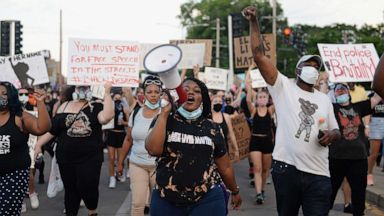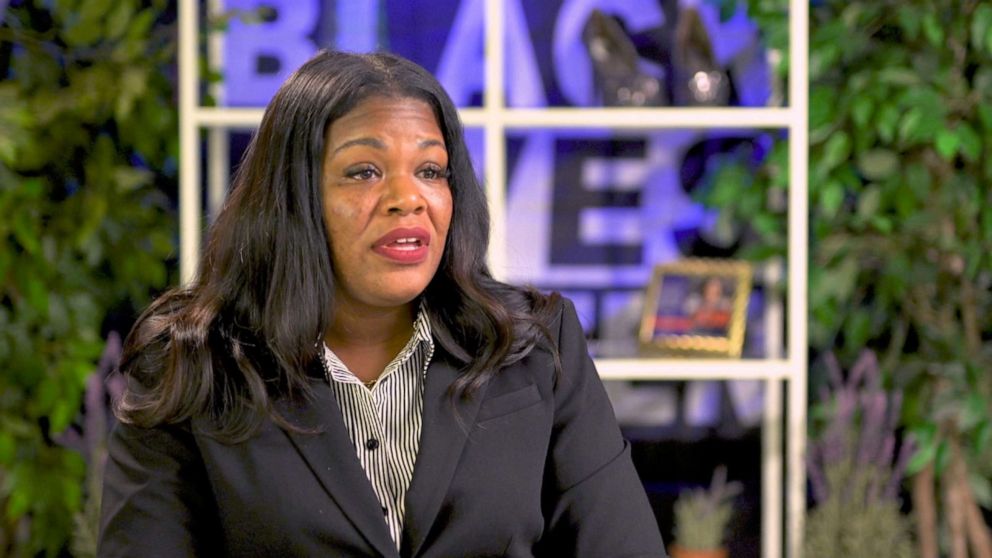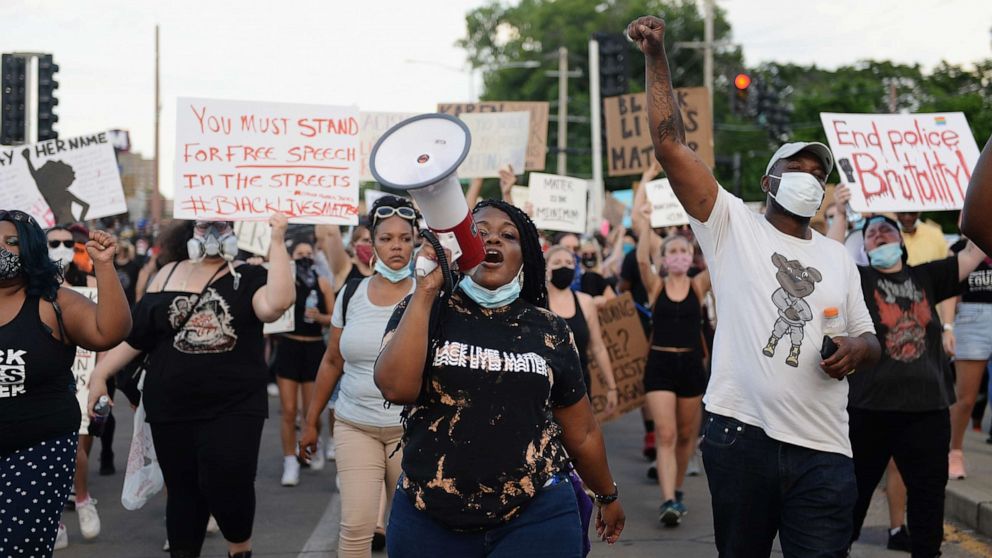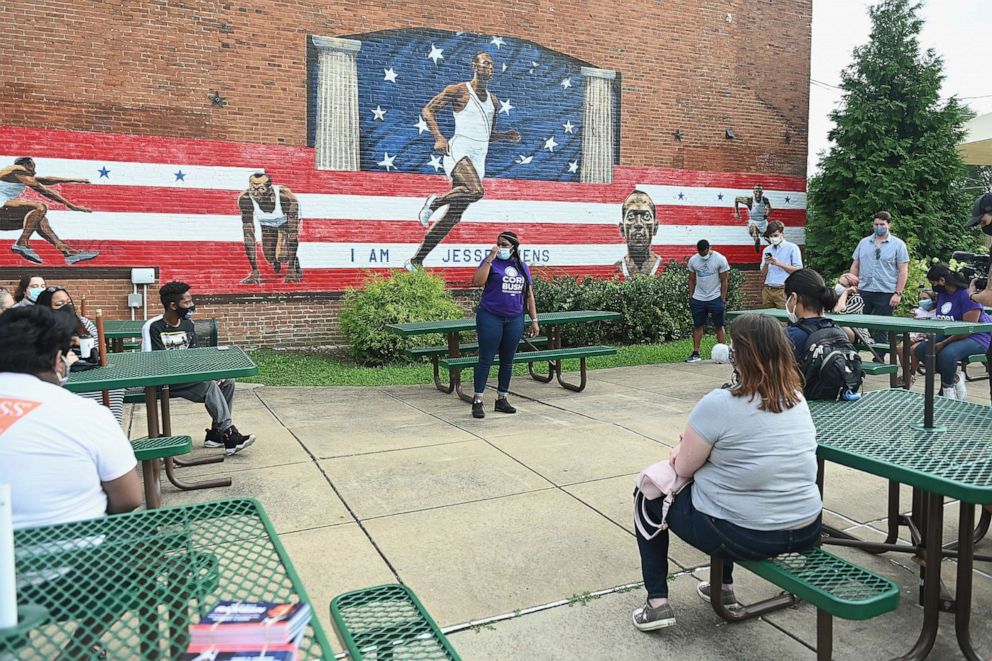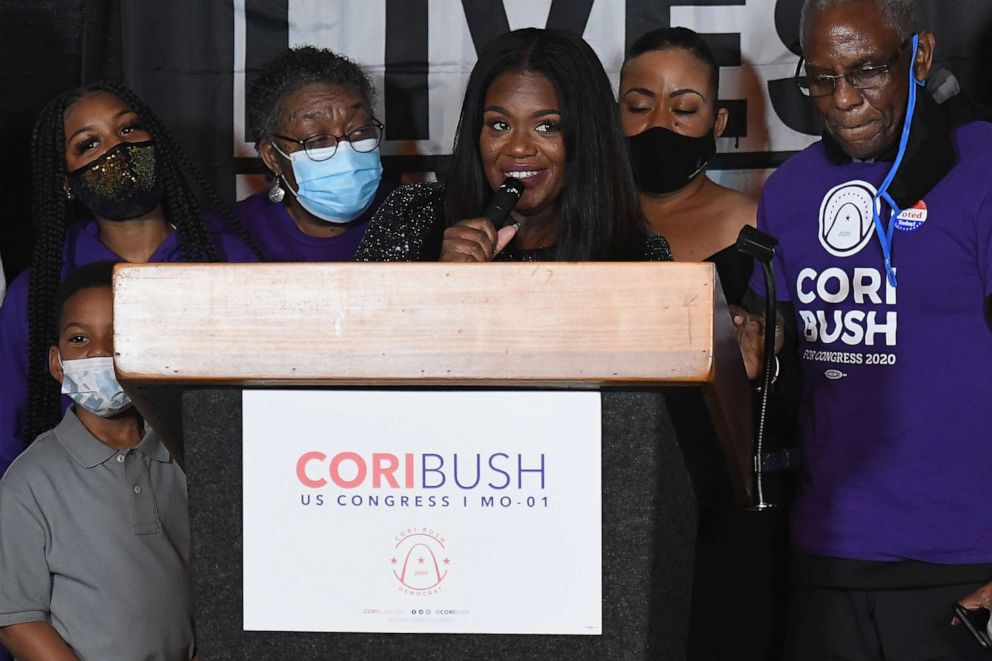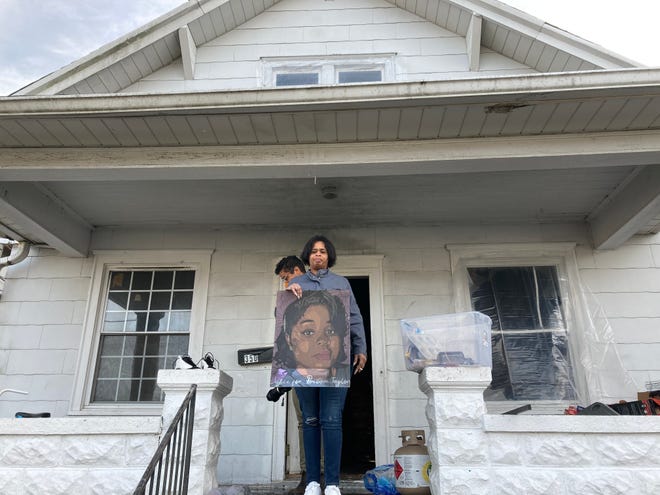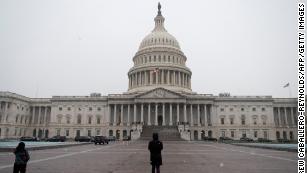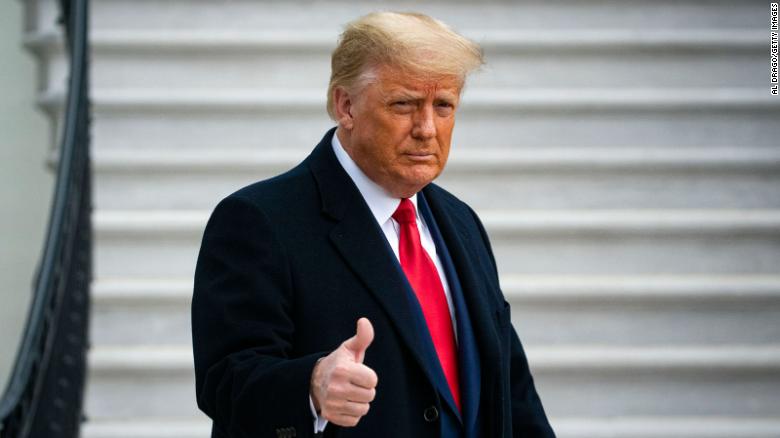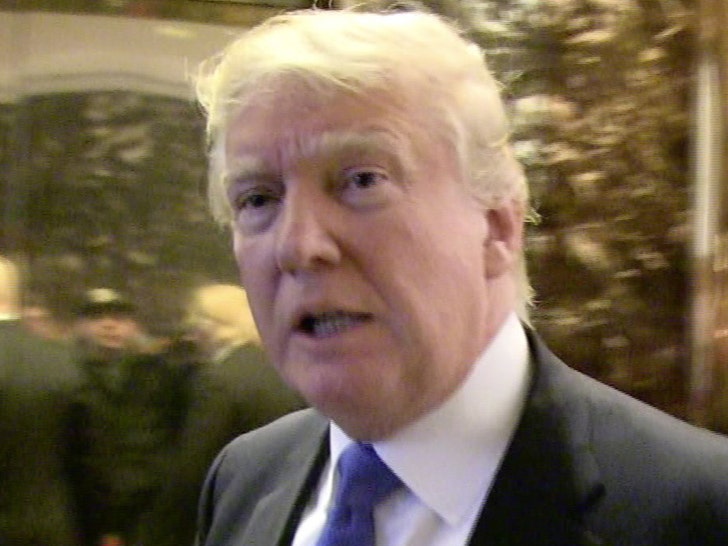
© Provided by NBC News
Soon-to-be ex-President Donald Trump has proven that even the United States, which has long touted its “city upon a hill” universal appeal, is not immune to authoritarianism. In recent memory, there have been other threats to U.S. democracy, yet none so dangerous as Trump’s Twitter tyranny.
When we think about surviving autocracies, we often focus on fighting the autocrats and their agents. But one way to combat tyrants is by limiting their power over people through reading. Books make it harder for despots to capture our “hearts and minds.” Appealing to our intellect and imagination, stories are a great weapon against a slogan or a soundbite. When common sense is in short supply, reading helps us deal with chaos and uncertainty. There is a feeling of control when morals and justice are restored, a reflective narrative becoming a road map of how to be or not to be.
For almost a century, the United States' leadership in world affairs made it an indisputable “first,” a superpower opposing undemocratic forces elsewhere. It has not been always benevolent, but by and large it has been beneficial to the globe.
VIDEO Ruth Ben-Ghiat: Trump isn't a madman. He's been following the authoritarian playbook since day one
Trump has pushed another “America First” to justify his self-serving nationalism — tearing up trade deals and stepping back from global institutions. This slogan, once associated with opponents of the U.S. entering World War II, now illustrates how even this nation can suffer from dictatorial urges, a scenario already imagined in the 1935 fine piece of literature "It Can’t Happen Here" by Sinclair Lewis. And reading Philip Roth’s "The Plot Against America," we recognize the outgoing White House occupant — almost a caricature textbook despot — as the present-day version of Roth’s “America First Party” fictional president Charles Lindbergh.
The United States of America is a far cry from the traditional Hitler- or Stalin-type authoritarianism, characterized by complete state domination over people’s lives. But it is no longer the America of everyone’s dream that won the Cold War — the laissez-faire land of individual freedoms, enhanced efficiency, advanced technology and alluring popular culture.
There is such a problem as too much of a good thing, and perhaps America's triumph has led to its defeat. Back in 1953, Ray Bradbury warned about such an outcome in “Fahrenheit 451”: Efficiency was reduced to simplification, technology replaced reality with a digital screen and an occasional amusement devolved into a constant quest for entertainment in a country that has become addicted to and mediated by reality television.
As early as 380 BC, Plato explained that though democracy is seen as providing protection against absolute power, you can have both: “Dictatorship naturally arises out of democracy, and the most aggravated form of tyranny and slavery out of the most extreme liberty.” And in 1835, describing “Democracy in America,” Alexis de Tocqueville observed the country's potential weakness: the tyranny not of a dictator but of a majority that falls for easy answers and seeks excitement and undemanding catchphrases framed as ultimate truths. The “omnipotent” power of the crowd — the uncritical jumping on a bandwagon of other people’s assertions — in America can constrain “freedom of mind,” he wrote, hampering debate and making enemy of opposing opinions.
This is part of a special series looking at how we survived 2020 — and how we can keep surviving in 2021. Read more here.
Now, the crowd-pleasing president has become a vehicle of the extreme entertainment and outrageous claims that de Tocqueville feared could demoralize American democracy. Trump’s tweeting not only caters to simplistic solutions, but also oppresses from the top, just like actual tyrants in traditionally despotic states. His unprecedented efforts to overturn the presidential election are now almost indistinguishable from other fellow autocrats, following the dictatorial scripts of Russia, Turkey or Venezuela.
The United States still has what those others do not: a legal system that is mostly independent from the authority of the executive and legislative branches. With elections now officially certified for President-elect Joe Biden, democracy has prevailed, so far. But each of America’s undemocratic cycles brings it closer to conventional authoritarianism.
In the 1970s, the efforts of Richard “Tricky Dick” Nixon to undermine opponents by spying on them resulted in his impeachment trial and resignation. Yet Dick “the Dicktator” Cheney, the real mastermind behind the George W. Bush administration’s unjustified wars and policy of torture, has become one of the patriarchs of the Republican party. And now Trump, another almost-impeached president, is able to assault democratic elections with the support of almost half of the country.
What if democracy cannot withstand the pressure next time? Trump may or may not be done with politics, but the people who emulate and support him aren’t done with America.
So how can we make sure another Trump doesn’t rise to power? You probably can’t. Russia has tried many times. In 1956, my great-grandfather Nikita Khrushchev denounced Joseph Stalin, an ultimate dictator responsible for millions imprisoned and killed in the Soviet Gulag labor camps. Mikhail Gorbachev continued on with those denunciations during his 1980s perestroika (restructuring). Today, however, the shadow of Stalinism looms large over the strong-armed autocracy of Vladimir Putin.
And here’s where reading comes in. Trump spreading his freewheeling fictions takes full advantage of this culture of willful ignorance. This may sound banal, but reading confronts simple-mindedness.
Knowledge can help prevent taking at face value easily digestible and cliché-affirming soundbites. After all, the end of global communism was arguably brought on less by the Kremlin’s bad politics and more by Aleksandr Solzhenitsyn’s powerful “The Gulag Archipelago,” his eyewitness account of the horrors of Stalin’s rule.
In the United States, politics has become a product less dependent on policy than on PR and performance. Yet, politicians should not be defined by our desire to have a beer with them, but rather by knowledge, professionalism and public service, qualities sorely missing in the last four years of American life. Peter Baker and Susan Glasser described in their very timely biography of James Baker III, a secretary of state in the waning years of the Cold War, this kind of leader as a deliberative doer rather than a silly showman. Baker’s expert handling of foreign affairs helped smooth disagreements between George H.W. Bush and Gorbachev, which hastened the fall of Soviet-era communism. This example certainly merits our attention.
Books don’t only make us wiser, generously allowing us to absorb the experience of others. They also tell us there are limits to despotism — a populist message of self-aggrandizement is not forever. When the message doesn’t correspond to reality long enough, change can prevail.
Related:
THINKing about how we survived one of the worst years ever — and what happens next
Soon-to-be ex-President Donald Trump has proven that even the United States, which has long touted its “city upon a hill” universal appeal, is not immune to authoritarianism. In recent memory, there have been other threats to U.S. democracy, yet none so dangerous as Trump’s Twitter tyranny.
When we think about surviving autocracies, we often focus on fighting the autocrats and their agents. But one way to combat tyrants is by limiting their power over people through reading. Books make it harder for despots to capture our “hearts and minds.” Appealing to our intellect and imagination, stories are a great weapon against a slogan or a soundbite. When common sense is in short supply, reading helps us deal with chaos and uncertainty. There is a feeling of control when morals and justice are restored, a reflective narrative becoming a road map of how to be or not to be.
For almost a century, the United States' leadership in world affairs made it an indisputable “first,” a superpower opposing undemocratic forces elsewhere. It has not been always benevolent, but by and large it has been beneficial to the globe.
VIDEO Ruth Ben-Ghiat: Trump isn't a madman. He's been following the authoritarian playbook since day one
Trump has pushed another “America First” to justify his self-serving nationalism — tearing up trade deals and stepping back from global institutions. This slogan, once associated with opponents of the U.S. entering World War II, now illustrates how even this nation can suffer from dictatorial urges, a scenario already imagined in the 1935 fine piece of literature "It Can’t Happen Here" by Sinclair Lewis. And reading Philip Roth’s "The Plot Against America," we recognize the outgoing White House occupant — almost a caricature textbook despot — as the present-day version of Roth’s “America First Party” fictional president Charles Lindbergh.
The United States of America is a far cry from the traditional Hitler- or Stalin-type authoritarianism, characterized by complete state domination over people’s lives. But it is no longer the America of everyone’s dream that won the Cold War — the laissez-faire land of individual freedoms, enhanced efficiency, advanced technology and alluring popular culture.
There is such a problem as too much of a good thing, and perhaps America's triumph has led to its defeat. Back in 1953, Ray Bradbury warned about such an outcome in “Fahrenheit 451”: Efficiency was reduced to simplification, technology replaced reality with a digital screen and an occasional amusement devolved into a constant quest for entertainment in a country that has become addicted to and mediated by reality television.
As early as 380 BC, Plato explained that though democracy is seen as providing protection against absolute power, you can have both: “Dictatorship naturally arises out of democracy, and the most aggravated form of tyranny and slavery out of the most extreme liberty.” And in 1835, describing “Democracy in America,” Alexis de Tocqueville observed the country's potential weakness: the tyranny not of a dictator but of a majority that falls for easy answers and seeks excitement and undemanding catchphrases framed as ultimate truths. The “omnipotent” power of the crowd — the uncritical jumping on a bandwagon of other people’s assertions — in America can constrain “freedom of mind,” he wrote, hampering debate and making enemy of opposing opinions.
This is part of a special series looking at how we survived 2020 — and how we can keep surviving in 2021. Read more here.
Now, the crowd-pleasing president has become a vehicle of the extreme entertainment and outrageous claims that de Tocqueville feared could demoralize American democracy. Trump’s tweeting not only caters to simplistic solutions, but also oppresses from the top, just like actual tyrants in traditionally despotic states. His unprecedented efforts to overturn the presidential election are now almost indistinguishable from other fellow autocrats, following the dictatorial scripts of Russia, Turkey or Venezuela.
The United States still has what those others do not: a legal system that is mostly independent from the authority of the executive and legislative branches. With elections now officially certified for President-elect Joe Biden, democracy has prevailed, so far. But each of America’s undemocratic cycles brings it closer to conventional authoritarianism.
In the 1970s, the efforts of Richard “Tricky Dick” Nixon to undermine opponents by spying on them resulted in his impeachment trial and resignation. Yet Dick “the Dicktator” Cheney, the real mastermind behind the George W. Bush administration’s unjustified wars and policy of torture, has become one of the patriarchs of the Republican party. And now Trump, another almost-impeached president, is able to assault democratic elections with the support of almost half of the country.
What if democracy cannot withstand the pressure next time? Trump may or may not be done with politics, but the people who emulate and support him aren’t done with America.
So how can we make sure another Trump doesn’t rise to power? You probably can’t. Russia has tried many times. In 1956, my great-grandfather Nikita Khrushchev denounced Joseph Stalin, an ultimate dictator responsible for millions imprisoned and killed in the Soviet Gulag labor camps. Mikhail Gorbachev continued on with those denunciations during his 1980s perestroika (restructuring). Today, however, the shadow of Stalinism looms large over the strong-armed autocracy of Vladimir Putin.
And here’s where reading comes in. Trump spreading his freewheeling fictions takes full advantage of this culture of willful ignorance. This may sound banal, but reading confronts simple-mindedness.
Knowledge can help prevent taking at face value easily digestible and cliché-affirming soundbites. After all, the end of global communism was arguably brought on less by the Kremlin’s bad politics and more by Aleksandr Solzhenitsyn’s powerful “The Gulag Archipelago,” his eyewitness account of the horrors of Stalin’s rule.
In the United States, politics has become a product less dependent on policy than on PR and performance. Yet, politicians should not be defined by our desire to have a beer with them, but rather by knowledge, professionalism and public service, qualities sorely missing in the last four years of American life. Peter Baker and Susan Glasser described in their very timely biography of James Baker III, a secretary of state in the waning years of the Cold War, this kind of leader as a deliberative doer rather than a silly showman. Baker’s expert handling of foreign affairs helped smooth disagreements between George H.W. Bush and Gorbachev, which hastened the fall of Soviet-era communism. This example certainly merits our attention.
Books don’t only make us wiser, generously allowing us to absorb the experience of others. They also tell us there are limits to despotism — a populist message of self-aggrandizement is not forever. When the message doesn’t correspond to reality long enough, change can prevail.
Related:
THINKing about how we survived one of the worst years ever — and what happens next
